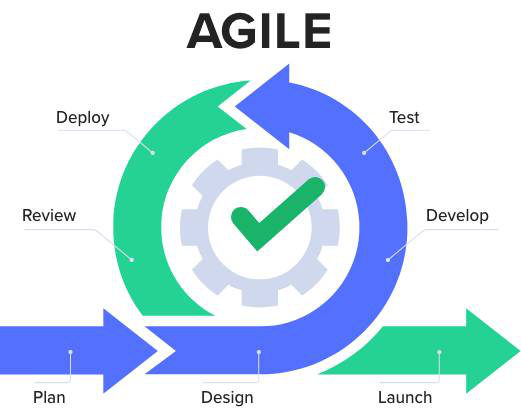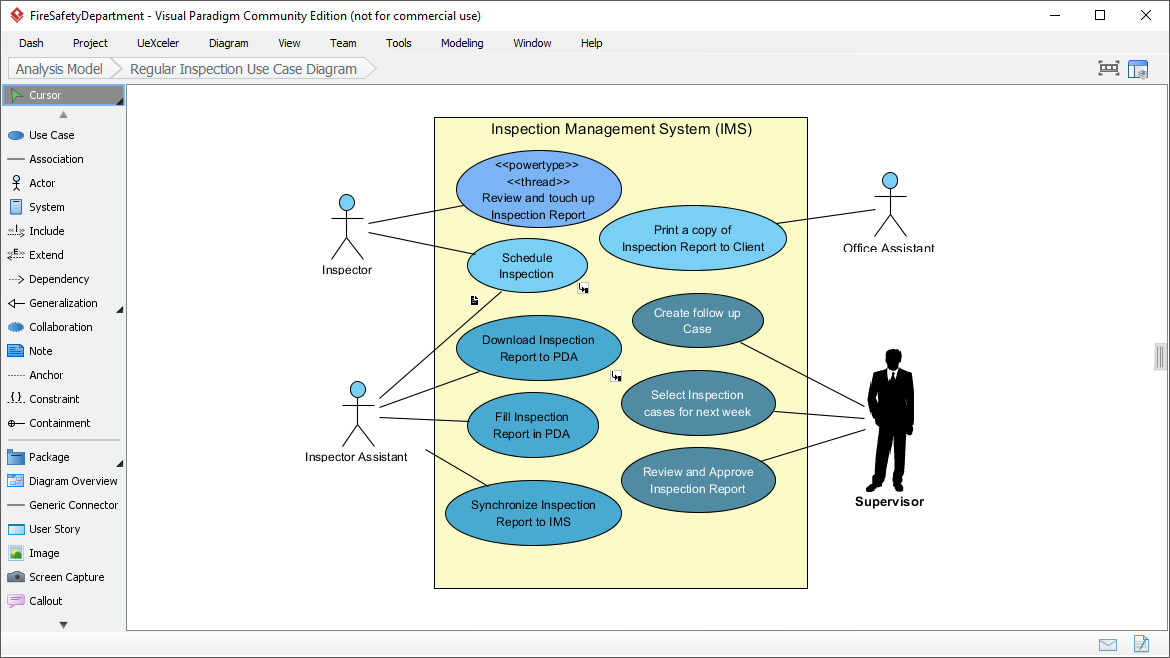Home » Archives for October 2023 » Page 6
-
Posted on October 10, 2023
Introduction In the fast-paced world of business and technology, effective communication is key. When it comes to visualizing and understanding complex systems and processes, a well-crafted Data Flow Diagram (DFD) can make all the difference. Visual Paradigm introduces its Online Gane Sarson Diagram Software, empowering you to create professional DFDs effortlessly. Why Choose Visual Paradigm's Online DFD Software? Speed and Simplicity: Visual Paradigm's online DFD tool is designed for efficiency. Whether you're a seasoned professional or a beginner, creating Gane Sarson Diagrams is a breeze. Our intuitive interface ensures that you spend less…
continue reading →
-
Posted on October 10, 2023
Visual Paradigm: Your Gateway to Intuitive and Powerful Diagramming! 🎨 Intuitive Interface: Visual Paradigm provides an intuitive and user-friendly interface, making diagram creation a breeze. Whether you're a beginner or an experienced diagrammer, you'll find the tools and features easy to navigate, streamlining your diagramming experience. 🚀 Comprehensive Diagramming Tools: From Data Flow Diagrams (DFDs) to UML diagrams, Visual Paradigm offers a wide range of diagramming tools to cater to various needs. Whether you're designing software systems, business processes, or database structures, Visual Paradigm has you covered. 🔄 Dynamic and Interactive Diagrams: Bring…
continue reading →
-
Posted on October 10, 2023
Introduction In the ever-evolving landscape of Information Technology, where complexities abound and processes intertwine, the need for a clear and structured approach to understanding information movement becomes paramount. This comprehensive guide aims to delve into the essence of Data Flow Diagrams, offering a roadmap for both novices and seasoned professionals in navigating the complexities of IT processes. From its historical roots in the 1970s to its contemporary relevance in Business Analysis and process visualization, DFD emerges as a beacon of clarity. Join us on this journey as we explore the fundamental components of DFD,…
continue reading →
-
Posted on October 10, 2023
Introduction Navigating the intricate landscape of software engineering demands tools that can distill complexity into clarity. Among these tools, Data Flow Diagrams (DFDs) stand as pillars, offering a visual roadmap for understanding the flow of information within a system. In this comprehensive guide, we will embark on a journey through the fundamentals, principles, and structured levels of DFDs to empower you with the skills needed to wield this indispensable instrument in software design. Unveiling the Essence of DFDs At its core, a Data Flow Diagram is a graphical representation that captures the movement…
continue reading →
-
Posted on October 10, 2023
Introduction In the intricate landscape of software engineering, Data Flow Diagrams (DFD) emerge as indispensable tools for unraveling the intricacies of system functionality. These graphical representations come in distinct levels, each peeling back layers of complexity. Levels of DFD Let's embark on a journey through the three pivotal levels of DFD: Level 0 DFD, Level 1 DFD, and Level 2 DFD. 1. Level 0 DFD: The Grand Overview At the zenith of abstraction stands the Level 0 DFD, aptly termed the context diagram. This panoramic view provides an encompassing glance at the entire…
continue reading →
-
Posted on October 10, 2023
Introduction Navigating the labyrinth of complex systems demands a beacon of clarity, and that’s where Data Flow Diagrams (DFD) come into play. In this comprehensive guide, we will delve into the depths of DFD, offering not just examples but a detailed exploration of its components, rules, advantages, disadvantages, and a step-by-step tutorial. Understanding Data Flow Diagrams (DFD): At its essence, a Data Flow Diagram is a visual representation of how data moves within a system. It serves as a dynamic map illustrating the input, output, sources, storage, and destinations of data within a…
continue reading →
-
Posted on October 9, 2023
Introduction In the ever-evolving landscape of technology, it's crucial for educational institutions to equip their students with the skills demanded by the industry. Visual Paradigm's Academic Partner Program emerges as a super deal for universities and colleges, providing a comprehensive solution to prepare students for success in software development. Why Visual Paradigm? Visual Paradigm stands as the ultimate teaching tool, covering a spectrum of essential technologies such as Object-Oriented Technologies, UML, ERD, BPMN, UX, and Agile. Trusted by over 320,000 IT professionals, ranging from small businesses to Fortune 500 companies, Visual Paradigm ensures…
continue reading →
-
Posted on October 4, 2023
Introduction In the ever-evolving landscape of software development, the Agile methodology stands as a beacon of adaptability and collaboration. Meanwhile, Unified Modeling Language (UML) is often seen as a heavyweight relic of a bygone era. Can these seemingly disparate approaches find common ground? This article delves into the marriage of UML and Agile, exploring how visual modeling can enhance communication without compromising agility. UML in Agile UML and Agile may seem like an odd couple at first, but they can actually complement each other quite well. While Agile emphasizes flexibility, collaboration, and responding…
continue reading →
-
Posted on October 4, 2023
Introduction Embarking on the journey of developing an IT system demands a clear roadmap to navigate the complexities of design and functionality. In this article, we'll delve into the art of system development using three powerful tools in UML: Use Case Diagrams, Sequence Diagrams, and Activity Diagrams. Join us as we unravel the process through the lens of building a simple yet illustrative online shopping system. Use Case Diagram: In the Use Case Diagram, you would identify the different actors and their interactions with the system. Actors are external entities that interact with…
continue reading →
-
Posted on October 3, 2023
A principle is a general statement that guides and constrains the decision-making and behavior of an organization or enterprise. It reflects the organization's values, goals, and priorities, and helps to ensure that all decisions and actions are aligned with its vision and mission. Enterprise principles provide a high-level set of guidelines for designing and implementing enterprise solutions. These principles help to ensure that all solutions align with the organization's goals, strategy, and values, while also facilitating consistency and interoperability across different architecture domains. Developing effective architecture principles requires a deep understanding of the…
continue reading →



